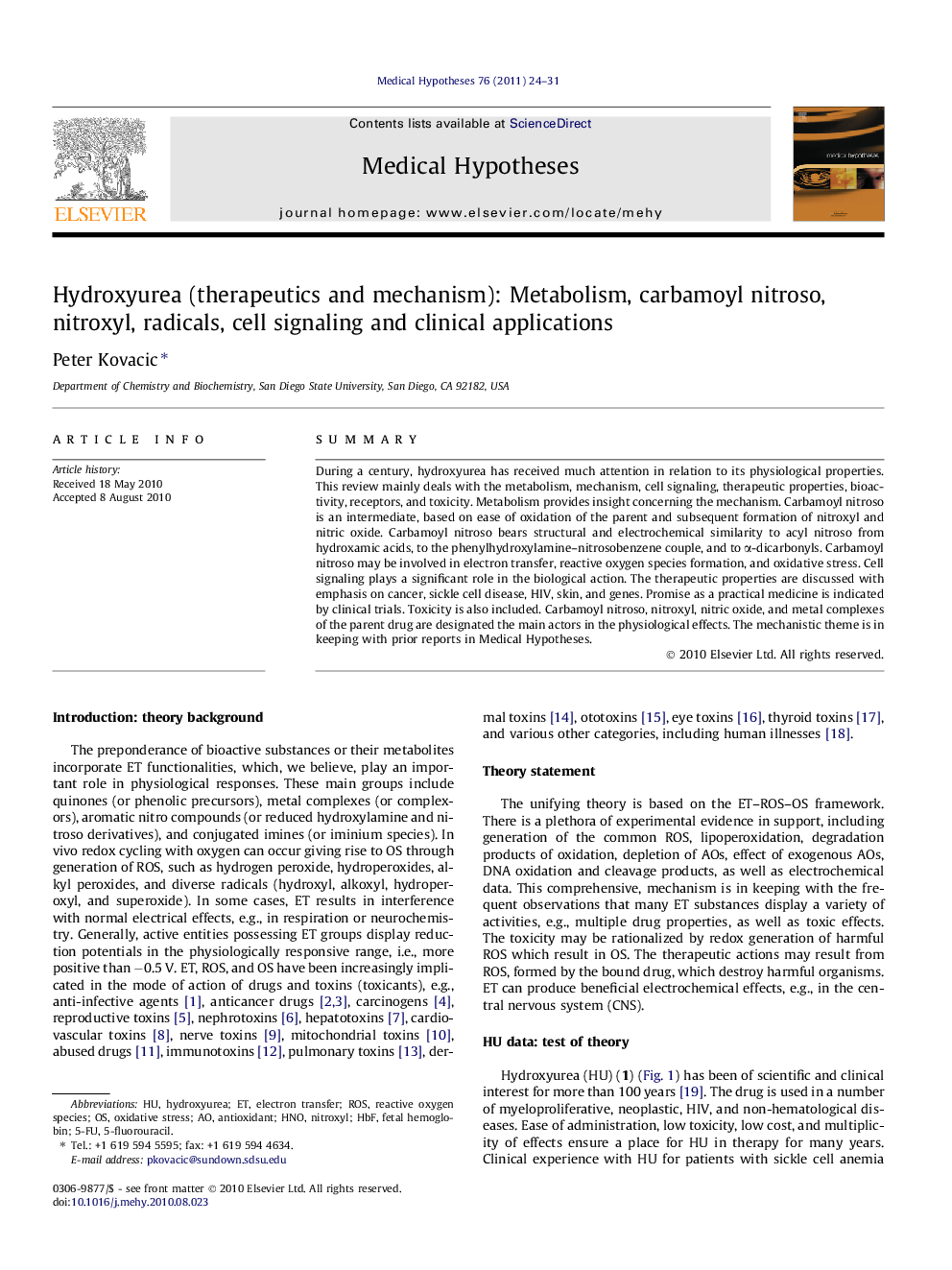| کد مقاله | کد نشریه | سال انتشار | مقاله انگلیسی | نسخه تمام متن |
|---|---|---|---|---|
| 5812835 | 1115044 | 2011 | 8 صفحه PDF | دانلود رایگان |
عنوان انگلیسی مقاله ISI
Hydroxyurea (therapeutics and mechanism): Metabolism, carbamoyl nitroso, nitroxyl, radicals, cell signaling and clinical applications
دانلود مقاله + سفارش ترجمه
دانلود مقاله ISI انگلیسی
رایگان برای ایرانیان
کلمات کلیدی
موضوعات مرتبط
علوم زیستی و بیوفناوری
بیوشیمی، ژنتیک و زیست شناسی مولکولی
زیست شناسی تکاملی
پیش نمایش صفحه اول مقاله

چکیده انگلیسی
During a century, hydroxyurea has received much attention in relation to its physiological properties. This review mainly deals with the metabolism, mechanism, cell signaling, therapeutic properties, bioactivity, receptors, and toxicity. Metabolism provides insight concerning the mechanism. Carbamoyl nitroso is an intermediate, based on ease of oxidation of the parent and subsequent formation of nitroxyl and nitric oxide. Carbamoyl nitroso bears structural and electrochemical similarity to acyl nitroso from hydroxamic acids, to the phenylhydroxylamine-nitrosobenzene couple, and to α-dicarbonyls. Carbamoyl nitroso may be involved in electron transfer, reactive oxygen species formation, and oxidative stress. Cell signaling plays a significant role in the biological action. The therapeutic properties are discussed with emphasis on cancer, sickle cell disease, HIV, skin, and genes. Promise as a practical medicine is indicated by clinical trials. Toxicity is also included. Carbamoyl nitroso, nitroxyl, nitric oxide, and metal complexes of the parent drug are designated the main actors in the physiological effects. The mechanistic theme is in keeping with prior reports in Medical Hypotheses.
ناشر
Database: Elsevier - ScienceDirect (ساینس دایرکت)
Journal: Medical Hypotheses - Volume 76, Issue 1, January 2011, Pages 24-31
Journal: Medical Hypotheses - Volume 76, Issue 1, January 2011, Pages 24-31
نویسندگان
Peter Kovacic,